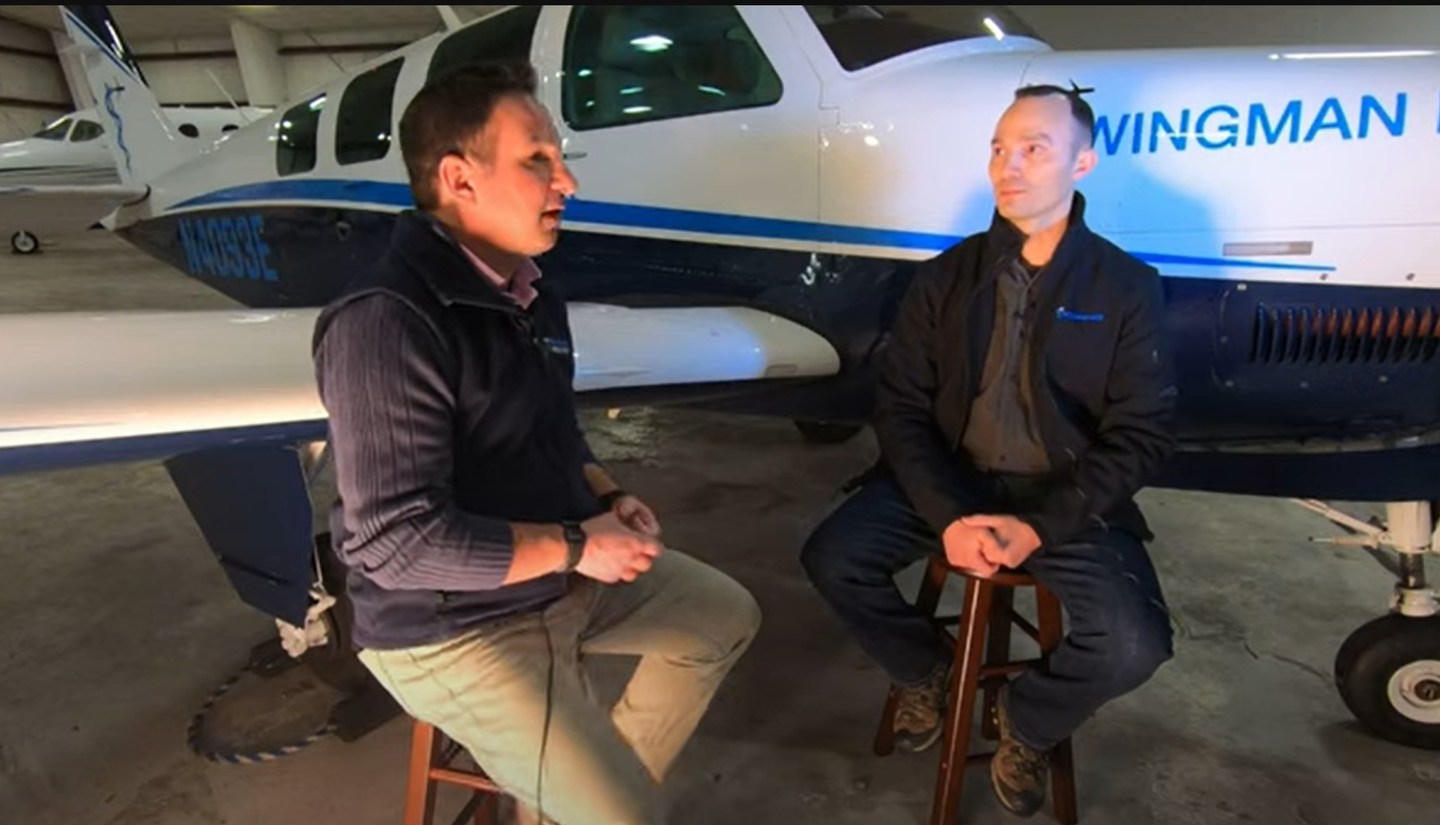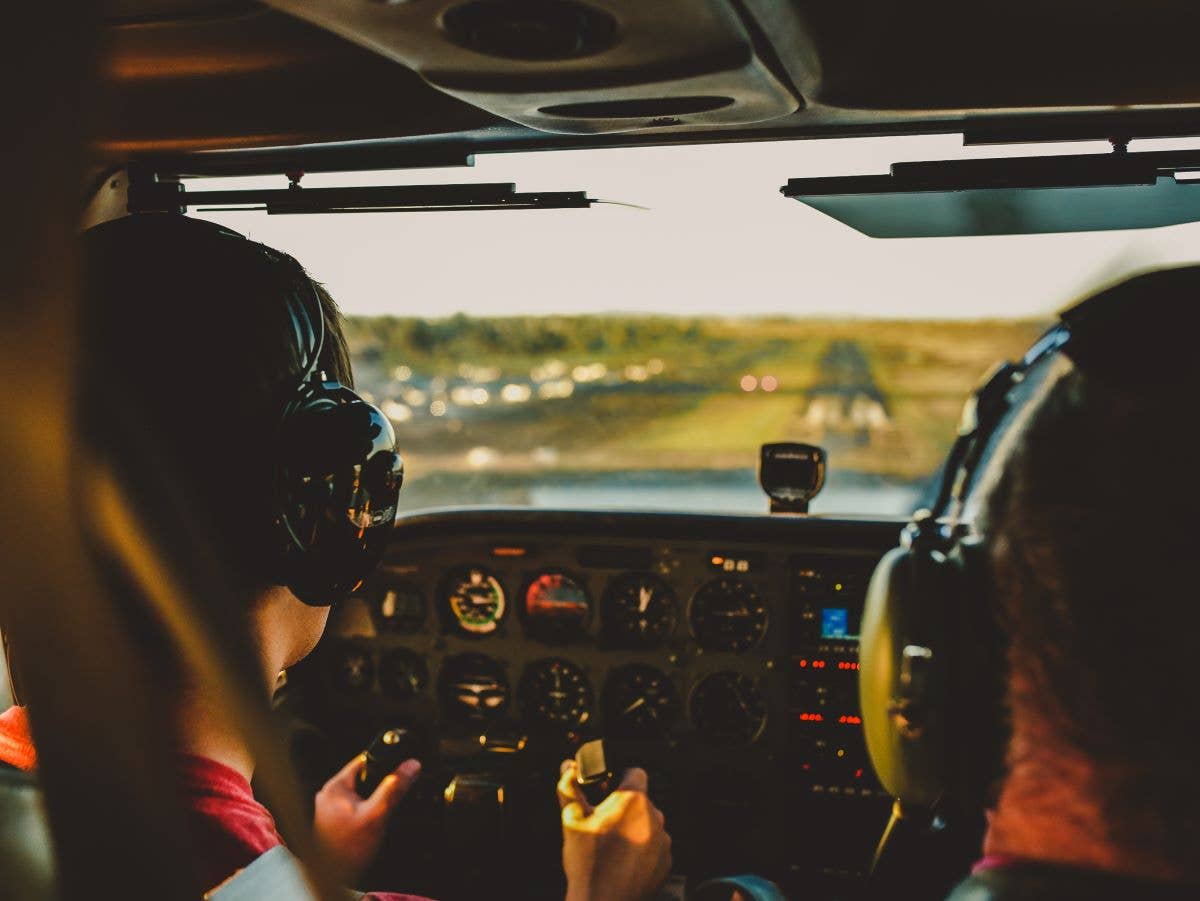Diamond Aircraft‘s Austria Home
A visit to the factory at Wiener Neustadt and a tour of the Austro Engine Plant
 |
It's late August, and it's also Saturday morning of my last weekend in Austria. For the past five years, I've been living and working in Vienna, but today, I'm driving about 20 miles south from Vienna to Wiener Neustadt (literally "Vienna new town" or "New Vienna") to visit the Diamond Aircraft factory and the adjacent Austro Engine manufacturing facility. Diamond's factory is located at Wiener Neustadt East (LOAN), which has a 3,500-foot paved runway. In addition to the Diamond and Austro factories, it hosts a number of GA operators, as well as the Aviaticum museum and the pleasant Katana Kafe next to the museum---named for the DA20 Katana, an example of which is mounted outside the Kafe.
Wiener Neustadt has a rich aviation history, and for me, it's familiar territory. For a year or so, I regularly went to a sailplane club at Wiener Neustadt's other airfield, Wiener Neustadt West (LOXN). When I went to LOXN, I would often make the short cross-town drive to LOAN to visit the museum or to have lunch at the Katana Kafe, usually both if possible. LOXN is a grass field (its longest runway is about 5,300 feet) that celebrated its 100th anniversary in 2009. LOXN was the first airfield in Austria-Hungary, and today, it's a joint military-civilian operation, with the civil side of the field primarily devoted to sailplanes and parachuting. Visitors to Wiener Neustadt may also be interested to see the Theresian Military Academy, located in the center of town, which is the oldest military academy in the world, established by Empress Maria Theresa in 1751. Like almost all of Wiener Neustadt, it had to be rebuilt after the World War II bombing that heavily targeted the area, in part due to its aircraft industry.
Michael Feinig, Diamond's Managing Director, graciously agreed to give up part of his Saturday for the factory tours, and, I hope, a flight in one of Diamond's aircraft. However, it's a drizzly summer morning with intermittent showers from a series of slow-moving fronts that have led to some severe flooding to the east, and there's also an overcast. Whether we'll fly seems problematic as I head south.
 |
I meet Feinig at the Katana Kafe and he explains the history of Diamond and the company's current worldwide activities. Diamond, now owned by the Dries family, evolved from Hoffman Flugzeugbau (Hoffman aircraft manufacturing), which produced the H36 motorglider. In 1987, the company moved to Wiener Neustadt and then was acquired by the Dries family in 1991. The acquisition was followed in 1992 by the establishment of a production facility in Canada. The company name became Diamond in 1996. Diamond also has a joint-venture facility in China that opened in 2005 and builds the DA40 there under license.
In essence, there are three Diamond factories, but none produce all of the Diamond line, which currently consists of the DA20 (two-place single engine), DA40 various models (four-place single), DA42 various models (four-place twin) and DA50 (four-to-five-place single). The DA52 (five-to-seven-place twin) and the D-Jet are under development. Wiener Neustadt is the global headquarters and design hub. There are about 500 employees there among the approximately 1,250 worldwide.
Throughout our conversation, Feinig emphasizes Diamond's expertise in composite aircraft, starting from their history with motorgliders. He also details their commitment to the development of general aviation aircraft and, specifically, their approach to the training and flight school market. Diamond has a dominant market share of the training market in Southeast Asia (approximately 90%) and is working hard to expand the market. One important factor in the Diamond approach is their use of diesel engines. In Asia, it's often difficult to find avgas, but Jet A or its equivalent is available wherever fuel is found.
 |
The Guardian
Feinig notes that the current economic problems have affected Diamond's market and all of general aviation, but he explains that the company has worked hard to develop a market for the MPP (Multi Purpose Platform) "Guardian" version of the DA42, producing a special-mission aircraft that's relatively inexpensive to buy and operate, and is easy to maintain. Thus far, Diamond has sold over 100 units of the DA42 MPP Guardians to 28 countries. The Guardian can be used for maritime patrol, surveillance and a host of tasks that can utilize its long-range and/or long loiter time. The DA42 NG sells in the range of 650-680,000 Euro (at the current exchange rate of about $1.28 per Euro, this would be about $832,000 to $870,000), while the MPP Guardian starts at about 1 million Euro (about $1,280,000), but the sensor packages (search radars, FLIR, etc.) can make the final price four to five times as high. Steep numbers, but very economical for government and law-enforcement use, especially when Feinig told me that the operating costs were on the order of $180 per hour.
Because Diamond has a separate hangar to showcase the Guardian, Feinig shows it to me first. The Guardian can be configured in a number of ways, and the hangar contains various Guardians that were going to be used by different countries in different roles. Also displayed in the hangar are different types of sensor and communication equipment, making it essentially a complete Guardian "showroom."
Diamond Factory
After the Guardian hangar, we tour the Diamond production line. Diamond develops their own tooling and production procedures, building on its early experiences with composites.
Our factory tour generally follows the production flow path with the laying-up, molding and curing of the major composite components and their trimming and assembly. To the novice like me, this process has always seemed a lot like the large-scale building of the plastic model airplane that many of us built as children. One can't help but look at a DA42 in a jig and think of how rubber bands held your model halves together as they dried.
Particularly impressive are the wing sections and the dual-spar construction that give the Diamond wings great strength. Additional areas of interest are the assembly areas where the fuselage sections are fitted with the internals, and then wings, undercarriage, engines, etc. are added, and the aircraft is moved to its final checkouts inspection, then test flown. Although production is down due to the recession, there are still a number of aircraft and components at each stage of production.
Austro Engine Plant
After our tour of the Diamond plant, we drive a short way to the Austro Engine plant. Austro was founded in 2007 and now produces the AE300 diesel used in the DA40 and the AE50R avgas-burning rotary engine used in motorgliders, small drone helicopters, etc
The AE300 is the engine used in the DA42 MPP Guardian and in other Diamond products like the DA42 NG, DA42-VI and DA40 NG. The engine itself starts from a Mercedes engine block, which Austro then transforms into an aircraft configuration. At the factory, there's an extremely interesting series of engines on stands that display the various steps in going from the Mercedes block to the final AE300.
The AE50R is based on the Wankel concept and, like the AE300, is fully aviation certified. In addition to the AE300 and AE50R, Austro has several other engines under development using the same auto-to-aero concept, as well as completely new developments.
Austro has a series of pristine assembly stations and test cells to develop and run in the engines, all contained in an impressive, modern, environmentally friendly facility.
After the tours of both facilities, Feinig offers the opportunity of a demo flight in a DA42. While this isn't a pilot report, it's fair to say that the flight is both impressive and fun, and it's a pleasure to see the product of both Diamond and Austro in action. With its stick and EECU engine controls, the DA42 has aspects that give it both a military and turbine feel. The glass cockpit is also impressive, but I must admit a reversion to the basic instruments when Feinig lets me fly a bit, and then follows me closely on a landing back at LOAN.
We put OE-VDK back in the hangar and I say goodbye to Feinig. As I head back to Vienna to begin my journey back to the U.S., I have some time to reflect on what I learned.
Diamond is aggressively marketing its aircraft worldwide. It will do alright through the recession, and with the Austrian economy being one of the strongest in Europe, it will ride out what comes along for the Euro zone. However, I'm left with a feeling of some sadness. As good as their current products are, Diamond and Austro have new products and ideas that have been delayed to the current state of economic affairs, and the world's aviation community is the overall loser to have the Diamond and Austro items postponed.
George Moore is an aviation attorney and a member of the Bar in California and Colorado, and various federal courts, including the U.S. Supreme Court. He's also a licensed Professional Engineer in California and holds a Ph.D. in Nuclear Engineering from the University of California, Berkeley. Moore holds a commercial license, airplane single-engine land and sea, with an instrument rating.
|
DA42 MPP Guardian
|
|
| Length: | 28 ft. 6 in. |
| Height: | 8 ft. 2 in. |
| Wingspan (ft.): | 44 |
| Empty Weight (lbs.): | 3086 |
| Useful Load (lbs.): | 1102 |
| Max. Takeoff Weight (lbs.): | 4189 |
| Fuel Capacity standard/aux tank (gals.): | 50/76 |
| MPP FEATURES | |
| Various Payload Pods: | universal nose (144 lbs.), belly pod (177 lbs.), under-floor radar pod (35 lbs.), nose pod (188 lbs.) |
| Bubble Canopy And Large Elevator Tips, Passive Surveillance Painting, Noise & IR Reduction Kit, Power Supply For Mission, Equipment (28V/40 amps) | |
|
PERFORMANCE
|
|
| Engines: | 168 hp Austro AE300 Turbocharged |
| Propellers: | MT 3-blade constant speed |
| Fuel Grades: | Jet A, Diesel EN590, TS-1, RT, JP-8, No. 3 Jet Fuel |
| Max. Cruise (kts.): | 177 |
| Fuel Consumption At 35% Power (gals./hr.): | 6.4 |
| Max Airborne Time At 35% Power (hrs.): | 12 |
| Max Range At 50% Power In 14,000 ft. Standard/Auxiliary (nm): | 784/1,198 |
| Takeoff Over 50-foot obstacle (ft.): | 2297 |
| Landing Over 50-foot obstacle (ft.): | 1870 |
| Max Service Ceiling (ft.): | 18,000 |
| Source: | Diamond Aircraft |

Subscribe to Our Newsletter
Get the latest Plane & Pilot Magazine stories delivered directly to your inbox






